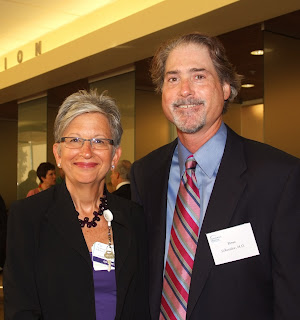
The LifeBridge Health Marketing Department won several awards recently, including top honors for its braVo! book and calendar.
The braVo! 2009 calendar was named a Judge’s Choice Award through the Aster Awards Competition, hosted by Creative Images, Inc., an internationally recognized firm specializing in strategic healthcare marketing. The Aster Awards is an annual contest honoring entries achieving excellence in healthcare marketing. From approximately 3,000 entries, there were only 10 Judge's Choice awards given.
The calendar also won gold in the Twenty-Sixth Annual Healthcare Marketing Advertising Awards competition, and an honorable mention from the Hermes Creative
 Awards. The Healthcare Advertising Awards honor the most prestigious examples of healthcare advertising, with over 175,000 entries submitted across the nation.
Awards. The Healthcare Advertising Awards honor the most prestigious examples of healthcare advertising, with over 175,000 entries submitted across the nation.The Hermes Creative Awards is an international competition, with entries submitted from corporate marketing and communication departments to non-profit institutions. The braVo! book also won kudos from the Hermes Creative Awards, which named it a platinum winner. Only 17 percent of the roughly 3,700 entries received this top honor.
MdMD Magazine for Life and the LifeBridge Health Web site are APEX 2009 Award winners.
APEX 2009 awards were based on excellence in graphic design, editorial content and the success in the opinion of the judges in achieving overall communications effectiveness and excellence. They are sponsored by Communications Concepts, Inc. There were close to 3,785 entries this year, and there were 1,158 Awards of Excellence given out over 122 individual categories. MdMD Magazine for Life won in Apex's Magazine & Journal Writing category, and the Web site won in the Most Improved Web & Intranet Sites category.











